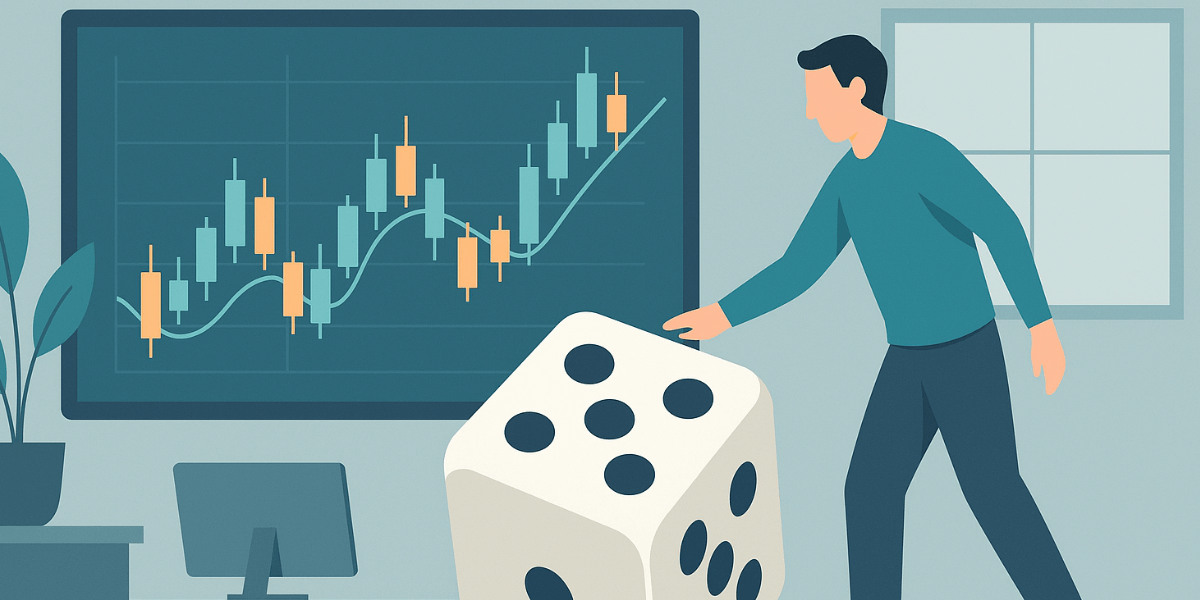Every trader, no matter how skilled, eventually faces days when the market feels like a storm. The charts move against your positions, the spreads widen, and every entry you take seems magnetically drawn to your stop-loss. Most traders experience these days as emotional chaos — but professionals see them as part of the landscape. What separates those who endure from those who disappear is not intelligence, not strategy, but structure. And the most fundamental structure of all is the daily loss limit.
The concept appears simple: define how much you are willing to lose in a single day and stop trading once that threshold is reached. Yet, beneath its simplicity lies the entire psychology of risk, discipline, and survival. Setting a daily loss limit is not merely a mechanical rule; it is the embodiment of restraint — a boundary between the rational and the emotional self.
In this exploration, we will go far beyond simple formulas. We will dissect how daily loss limits operate within a broader framework of risk management, how to calculate them scientifically, and, perhaps most importantly, how to respect them psychologically. Because a loss limit that exists only on paper is nothing more than decoration. The real work begins in the mind of the trader who must obey it.
Understanding the Essence of Daily Loss Limits
A daily loss limit is not about avoiding losses. It is about preventing damage that becomes unrecoverable. The market punishes those who treat every day as an opportunity to win big. Professional trading, unlike gambling, is not about extraction — it is about endurance. The best traders are those who remain operational long enough for probability to favor them. They survive losing streaks, drawdowns, and emotional storms because they operate within a structure that limits exposure to chaos.
Consider this: your trading system may have a positive expectancy, but if you allow one emotionally charged day to erase an entire month of gains, the math becomes meaningless. The daily loss limit protects the integrity of that expectancy. It ensures that no single day — no single decision — can sabotage the long-term trajectory of your performance.
In institutional settings, daily loss limits are enforced by risk managers. In retail trading, you are your own risk manager. That is both a privilege and a danger. You must learn to enforce on yourself the same discipline that professional firms impose from the outside. In essence, the daily loss limit is your internal compliance officer — the voice that says, “Stop now, before your judgment dissolves.”
Why Daily Loss Limits Matter
When traders think about risk, they often think in terms of per-trade exposure: how much to risk per position, how tight a stop-loss should be. But markets do not always hurt you one trade at a time. Sometimes, the real damage accumulates silently — a series of small losses that blend into fatigue and impulsivity. A daily loss limit interrupts this process.
Without a boundary, the mind enters a dangerous feedback loop: loss, frustration, urgency, revenge. Once inside this loop, rationality collapses. The trader begins to trade for emotional repair rather than strategic execution. This is where accounts implode — not because of strategy, but because of uncontained psychology. The daily limit breaks this loop by introducing a rule that cannot be negotiated. It removes you from the market before the market removes you entirely.
Professional traders know that no one can predict when the market will turn chaotic. What they can control is their exposure to chaos. The daily loss limit is the firewall that separates volatility from vulnerability.
Calculating a Rational Daily Loss Limit
There is no universal formula for the perfect daily loss limit. It depends on capital, volatility, trading frequency, and personal tolerance for stress. However, rational structure begins with a simple principle: you should never risk more than you can recover in a realistic timeframe.
Let us define some variables:
- Account equity (E): your total trading capital.
- Maximum daily loss (L): your chosen percentage of E.
- Average winning day (W): your mean daily profit over a sample period.
- Drawdown recovery factor (R): how many winning days it would take to recover one losing day.
Most professional traders set L between 1% and 2% of equity. For instance, with a $20,000 account and a 1.5% limit, your maximum loss is $300 per day. At 2%, it’s $400. This number may seem small, but its power lies in consistency. It ensures that even after five consecutive losing days, you would be down only 10%, not destroyed.
Balancing Limits with Volatility
Forex markets fluctuate in volatility across sessions and pairs. A trader who sets a static dollar-based limit may find it either too restrictive or too generous depending on market conditions. A better approach is to anchor your limit to volatility.
One method uses the Average True Range (ATR) as a proxy for volatility. Suppose your average trade risk (per stop-loss) equals one ATR. If ATR expands significantly (e.g., due to high-impact news or risk events), your potential per-trade loss increases naturally. Your daily limit should adjust proportionally, but always within a hard cap. This dynamic adjustment creates a balance between flexibility and control.
Mathematically, you can express this as:
Daily Loss Limit = Base Limit × (Current ATR / 30-day Average ATR)
When volatility spikes, your limit rises slightly; when volatility contracts, your limit tightens. This creates a self-regulating mechanism that respects the market’s rhythm while preserving discipline.
Hard vs. Soft Daily Limits
Most professionals distinguish between soft limits and hard limits:
- Soft Limit: A threshold at which you pause trading, reassess conditions, and evaluate performance. It acts as a warning, not a shutdown.
- Hard Limit: The absolute stop. Once reached, all trading must cease for the day, regardless of perceived opportunity.
This dual-layer system allows emotional flexibility without sacrificing control. You can think of it like a pilot’s checklist: when a warning light appears (soft limit), you review your instruments. If a critical alarm triggers (hard limit), you land immediately.
The Psychological Architecture of Respecting Limits
Having a rule is easy. Obeying it under pressure is not. The deeper challenge is not mathematical but psychological. The ego hates boundaries. It interprets limits as personal failure. When a trader hits their daily limit, the inner dialogue often begins: “I can win it back. One more trade. I just need one reversal.”
At that moment, the rational trader dies, replaced by the gambler. This transformation is subtle yet catastrophic. The brain, flooded with cortisol and adrenaline, loses access to prefrontal control — the region responsible for judgment and restraint. Neuroscience shows that after consecutive losses, the human brain physically shifts decision-making from rational to impulsive networks. No amount of logic can override chemistry. The only defense is a preemptive structure.
That is why a daily loss limit must not depend on “how you feel.” It must be coded into your environment — automated where possible, enforced where necessary. If you cannot trust your emotions, build a system that doesn’t require their cooperation.
Integrating Limits into a Broader Risk Framework
The daily loss limit is one layer in a hierarchy of defense. The structure looks like this:
- Per-trade stop-loss: Controls micro-level risk.
- Daily loss limit: Controls day-level risk.
- Weekly drawdown limit: Controls macro rhythm of performance.
- Maximum account drawdown: Protects total capital integrity.
Together, these limits form a nested system — a firewall with multiple layers. If one fails, the next activates. Without these boundaries, traders drift into chaos: a single bad session turns into a bad week, then into an unrecoverable hole.
Comparing Traders With and Without Daily Limits
| Aspect | Without Daily Limit | With Daily Limit |
|---|---|---|
| Emotional State | Reactive, volatile, impulsive | Structured, detached, rational |
| Equity Curve | Erratic with deep drawdowns | Smoother, controlled drawdowns |
| Longevity | Short-term survival | Long-term consistency |
| Decision Quality | Deteriorates after losses | Preserved through forced rest |
| Capital Efficiency | Overexposure and compounding losses | Stable utilization of margin and equity |
As the table shows, the difference is not subtle. It is structural. Traders without daily limits rely on emotional stability, which varies daily. Traders with limits rely on a process that never varies. The market rewards process over passion every time.
The Paradox of Restraint: Freedom Through Limitation
There is a paradox here. By limiting yourself, you gain freedom. Without a daily loss limit, you are a slave to impulse. Every trade becomes a negotiation between hope and fear. With a limit, you are free to trade confidently, knowing that damage is contained. The boundary, rather than confining you, creates psychological safety.
Professional traders describe this as the calm of containment. Within defined risk, creativity thrives. You can execute more objectively because you know the worst-case scenario is already predefined. Ironically, boundaries become the foundation for courage.
Integrating Limits Into Algorithmic or Manual Systems
In algorithmic trading, loss limits can be programmed directly. Once the system’s equity drops by X%, it automatically stops execution until manual reset. In manual discretionary trading, automation is harder but still possible. Platforms like MetaTrader, cTrader, or TradingView scripts allow you to trigger account-level stops or notifications when a threshold is hit.
For those without automation, discipline must be ritualized. Use visual cues, timers, or accountability partners. Write your loss limit on a note and place it near your screen. The physical reminder turns abstraction into presence.
Recovering After Hitting the Daily Limit
Reaching your daily loss limit is not failure — it is information. It signals one of three possibilities: either the market changed, your strategy underperformed, or your emotional state was compromised. The next step is reflection, not reaction.
After hitting the limit, do the following:
- Log every trade taken that day, including reasoning and emotion level.
- Review whether the market behaved abnormally or you did.
- Step away — physically — from the trading environment.
- Reassess your readiness before returning the next session.
This recovery ritual transforms the loss limit from punishment into pedagogy. Each breach becomes a lesson in process refinement.
Adapting the Limit Over Time
As you evolve, so will your tolerance for volatility. Your daily loss limit should adapt accordingly, but cautiously. Never raise it impulsively. Use performance data as justification. If your average daily profit grows by 20%, your loss limit can grow by 10%. Always slower in increase, faster in reduction.
Many professional funds implement dynamic scaling — limits expand after extended profitable periods but contract immediately after drawdowns. This asymmetric response maintains aggressiveness in favorable regimes while protecting equity during turbulence. It mirrors the concept of volatility targeting: increase exposure when conditions are calm, tighten when unstable.
The Role of Fatigue in Daily Losses
One underestimated factor behind breaches is cognitive fatigue. Trading is mentally expensive. Decision fatigue erodes impulse control, distorting perception of opportunity. A fatigued trader perceives randomness as signal. Most late-day losses come not from bad setups but from diminished willpower.
This is why daily loss limits work synergistically with time-based limits. Some professionals stop trading after two consecutive losing hours regardless of P&L. The goal is to preserve psychological capital. You can recharge capital through profit, but not through exhaustion.
The Long-Term Impact of Daily Limits
Imagine two traders starting with identical capital, strategy, and win rate. One trades without limits, the other enforces a strict 1.5% daily cap. After a year, their outcomes diverge sharply. The unrestrained trader experiences massive equity swings, emotional burnout, and inconsistent returns. The disciplined trader shows moderate gains but, more importantly, still exists. In the long run, survival compounds faster than brilliance.
Every professional trader eventually discovers that control, not prediction, is the ultimate edge. Markets are too complex to dominate, but they can be survived. The daily loss limit is the trader’s lifeline across storms.
Conclusion
To set a daily loss limit is to acknowledge human limitation. It is a declaration that discipline must precede ambition. In the silence of structure, the chaos of markets loses its power. The trader who knows when to stop is not weak; they are wise. They understand that capital, both financial and psychological, is finite and must be protected above all else.
In the end, trading is not a battle against the market — it is a dialogue with oneself. Every loss limit is a sentence in that conversation, a moment of self-recognition: “I am fallible, but I am prepared.” When that recognition becomes habitual, trading ceases to be an act of survival and becomes an act of design.
Frequently Asked Questions
What percentage should I use for my daily loss limit?
Most professionals recommend 1–2% of total equity. Conservative traders may use 0.5%, while aggressive but disciplined ones may go as high as 3%, provided their recovery structure supports it.
How do I handle emotions after hitting the limit?
Accept it as feedback, not failure. Step away from charts, engage in restorative activity, and analyze the trading session only after emotional neutrality returns.
Can I continue trading if I see a “perfect setup” after my limit?
No. The limit exists precisely for such moments. “Perfect setups” under emotional stress are usually illusions created by cognitive bias.
Should daily loss limits be the same for all trading strategies?
No. High-frequency scalping systems require smaller per-trade risk and tighter limits, while swing or position systems can use broader thresholds aligned with volatility.
What if I consistently hit my daily loss limit?
It indicates a mismatch between your risk parameters and market conditions. Reduce position size, review expectancy, and reassess your psychological threshold.
How does a daily limit differ from a stop-loss?
A stop-loss governs a single trade; a daily limit governs the day as a whole. It prevents a string of losing trades from escalating into uncontrolled damage.
Is a daily loss limit necessary for algorithmic traders?
Absolutely. Algorithms can malfunction or face unprecedented volatility. An account-level limit ensures capital protection beyond code assumptions.
Can I raise my daily limit after consistent profits?
Only if done gradually and justified by statistical improvement. Emotional justification is invalid. The increase should always lag behind performance growth.
What tools can help automate daily loss limits?
Scripts and risk management plug-ins in MetaTrader, cTrader, or Python-based platforms can track equity in real time and halt trading upon reaching thresholds.
What’s the psychological lesson behind enforcing daily loss limits?
That restraint is not weakness — it is mastery. The trader who stops on time demonstrates control over the only variable that truly matters: themselves.
Note: Any opinions expressed in this article are not to be considered investment advice and are solely those of the authors. Singapore Forex Club is not responsible for any financial decisions based on this article's contents. Readers may use this data for information and educational purposes only.







